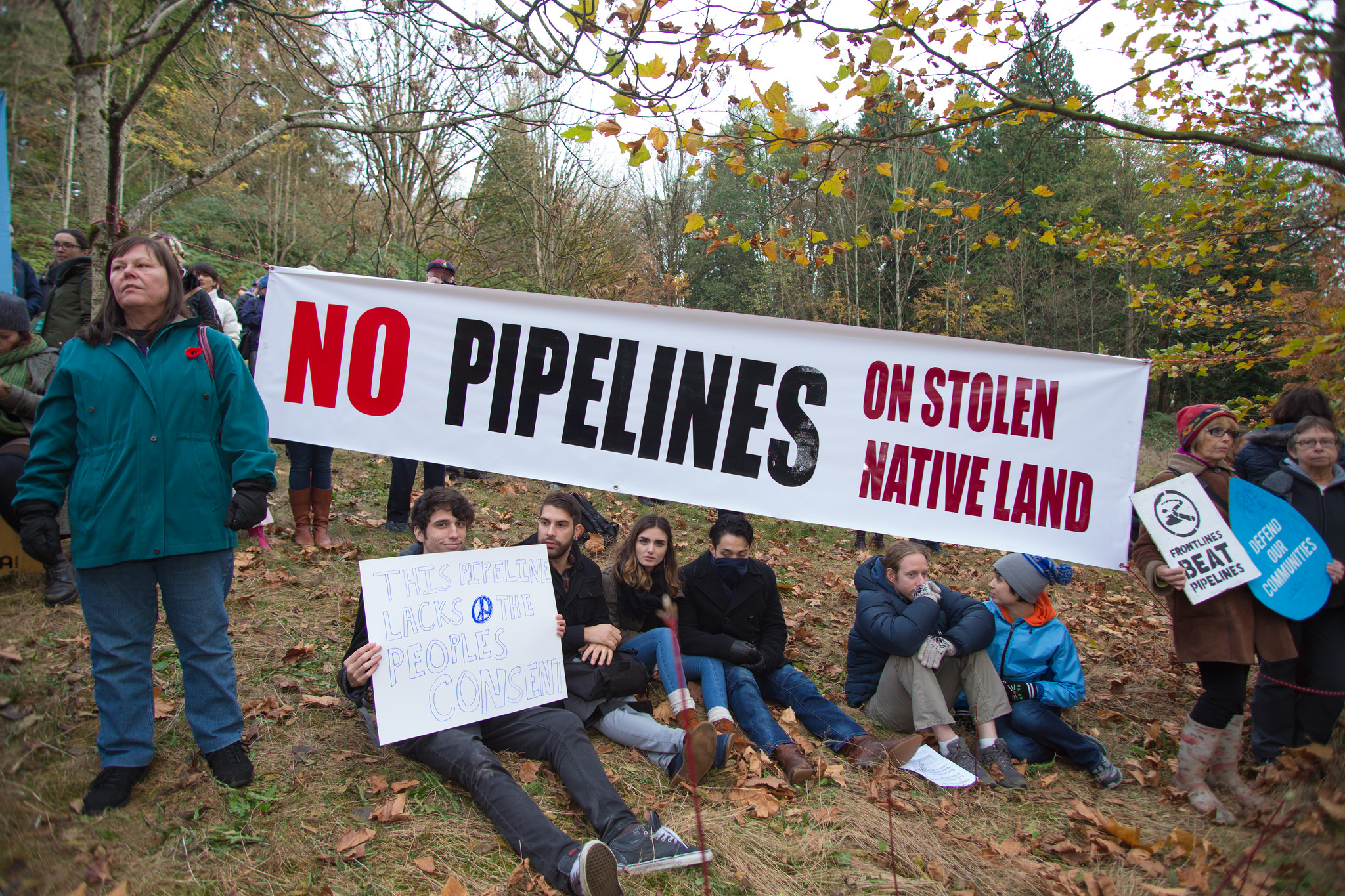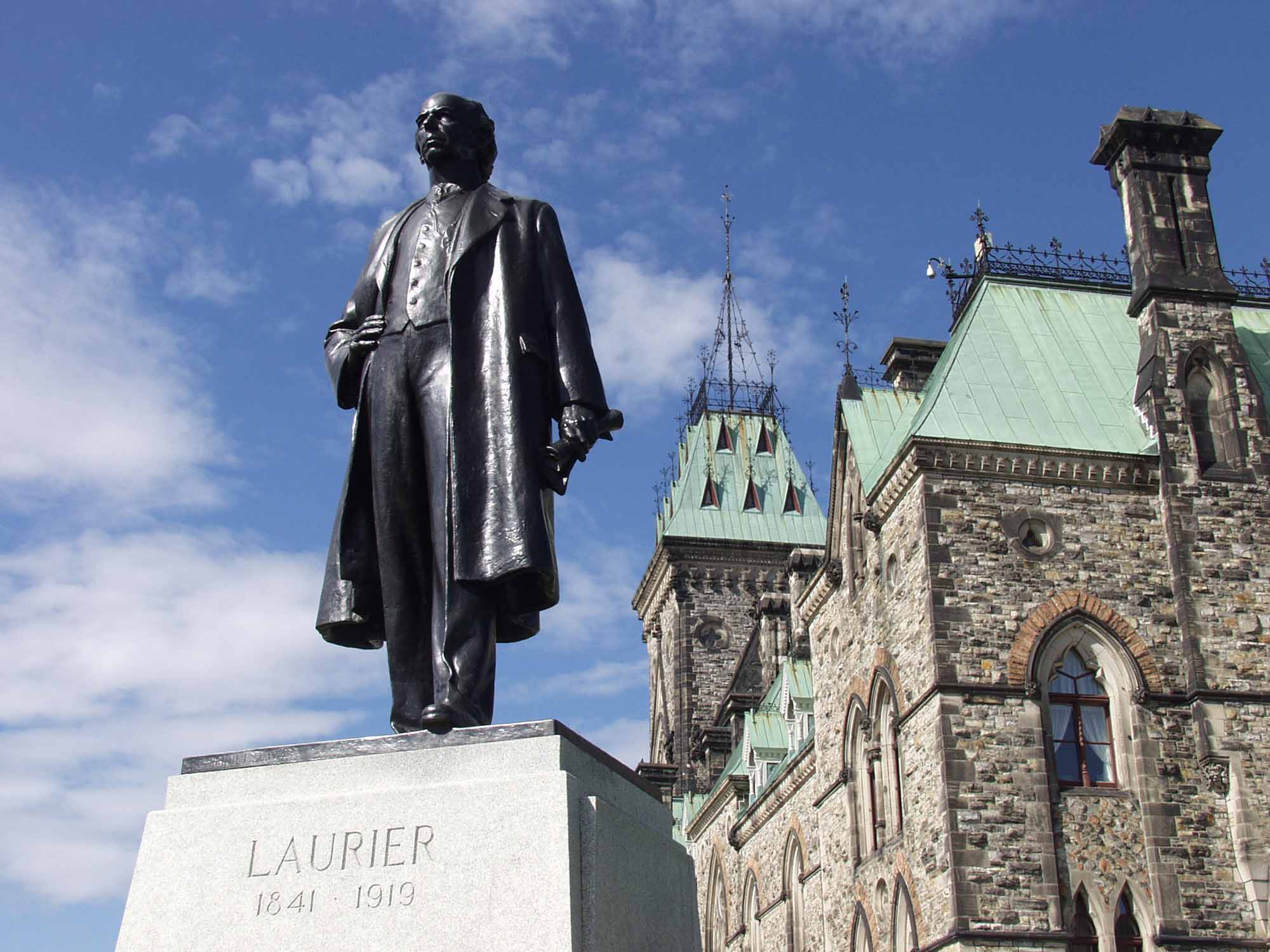Browse "Politics & Law"
-
Article
Dupond Case
Dupond Case In a case testing the scope of provincial interest in the area of public order, the Supreme Court in 1978 ruled as valid a Montréal ordinance forbidding for 30 days any public assembly, parade or gathering, on the grounds that it was a matter, as in the Hodge Case, of local public order in the province, and therefore authorized by the Constitution Act, 1867 (s92). The legislative measures of the Dupond case were...
"https://development.thecanadianencyclopedia.ca/images/tce_placeholder.jpg?v=e9dca980c9bdb3aa11e832e7ea94f5d9" // resources/views/front/categories/view.blade.php
https://development.thecanadianencyclopedia.ca/images/tce_placeholder.jpg?v=e9dca980c9bdb3aa11e832e7ea94f5d9
-
Article
Durham Report
In 1838, the British politician Lord Durham was sent to British North America to investigate the causes of the rebellions of 1837–38 in the colonies of Upper and Lower Canada. Durham's famous Report on the Affairs of British North America (1839) led to a series of reforms and changes. These included uniting the two Canadas into a single colony, the Province of Canada, in 1841. (See also: Act of Union.) The report also paved the way for responsible government. This was a critical step in the development of Canadian democracy. The report played an important role in the evolution of Canada’s political independence from Britain.
"https://d2ttikhf7xbzbs.cloudfront.net/media/media/65ee2cc4-fcf5-4663-b8d2-f9ce30422a92.jpg" // resources/views/front/categories/view.blade.php
https://d2ttikhf7xbzbs.cloudfront.net/media/media/65ee2cc4-fcf5-4663-b8d2-f9ce30422a92.jpg
-
Article
Durham Report (Plain-Language Summary)
In late 1837, violent rebellions took place in Upper and Lower Canada. (See Rebellions of 1837–38 [Plain-Language Summary].) In May 1838, Lord Durham was sent from Britain to find out what had caused the unrest. His Report on the Affairs of British North America (1839) led to a series of reforms. These included merging the two Canadas into the Province of Canada. This was done through the Act of Union in 1841. The report also paved the way for responsible government. This was a vital step in Canada’s path toward democracy and independence from Britain. This article is a plain-language summary of the Durham Report. If you would like to read about this topic in more depth, please see our full-length entry: Durham Report.
"https://d2ttikhf7xbzbs.cloudfront.net/media/media/65ee2cc4-fcf5-4663-b8d2-f9ce30422a92.jpg" // resources/views/front/categories/view.blade.php
https://d2ttikhf7xbzbs.cloudfront.net/media/media/65ee2cc4-fcf5-4663-b8d2-f9ce30422a92.jpg
-
Article
Duty to Consult
The duty to consult is a statutory, contractual and common law obligation that must be fulfilled by the Crown prior to taking actions or making decisions that may have consequences for the rights of Indigenous peoples in Canada. The duty to consult has been affirmed and clarified by various Supreme Court of Canada rulings, such as the Haida case (2004) and the Beckman v. Little Salmon/Carmacks case (2010). The duty to consult is considered by many to be an important step toward reconciliation with Indigenous peoples.
"https://d2ttikhf7xbzbs.cloudfront.net/media/media/6a400e13-acb7-412e-8e7e-6fdff2cae014.jpg" // resources/views/front/categories/view.blade.php
https://d2ttikhf7xbzbs.cloudfront.net/media/media/6a400e13-acb7-412e-8e7e-6fdff2cae014.jpg
-
Article
Early Women’s Movements in Canada: 1867–1960
Women’s movements (or, feminist movements) of the 19th and early-20th century — often referred to as first-wave feminism — included campaigns in support of temperance, women’s suffrage, pacifism, as well as labour and health rights.
"https://d2ttikhf7xbzbs.cloudfront.net/media/media/569d6d96-ffeb-485f-aa88-98b968b29e2a.jpg" // resources/views/front/categories/view.blade.php
https://d2ttikhf7xbzbs.cloudfront.net/media/media/569d6d96-ffeb-485f-aa88-98b968b29e2a.jpg
-
Macleans
East Timor Reprisal
First came the assurances.This article was originally published in Maclean's Magazine on September 20, 1999
"https://development.thecanadianencyclopedia.ca/images/tce_placeholder.jpg?v=e9dca980c9bdb3aa11e832e7ea94f5d9" // resources/views/front/categories/view.blade.php
https://development.thecanadianencyclopedia.ca/images/tce_placeholder.jpg?v=e9dca980c9bdb3aa11e832e7ea94f5d9
-
Macleans
East Timor Votes for Independence
After nearly a quarter of a century, the people of tiny, impoverished East Timor finally had the chance to say what future they wanted - independence, or staying a part of Indonesia. As a phenomenal 98.This article was originally published in Maclean's Magazine on September 13, 1999
"https://development.thecanadianencyclopedia.ca/images/tce_placeholder.jpg?v=e9dca980c9bdb3aa11e832e7ea94f5d9" // resources/views/front/categories/view.blade.php
https://development.thecanadianencyclopedia.ca/images/tce_placeholder.jpg?v=e9dca980c9bdb3aa11e832e7ea94f5d9
-
Article
Easton Treaty
The Easton Treaty (or Treaty of Easton) is an agreement between British and Indigenous peoples, established at the forks of the Delaware River in Easton, Pennsylvania in 1758. The treaty was signed after a conference between British colonial officials and more than 500 chiefs, representing 15 Woodland Indigenous peoples in October 1758. Through the Easton Treaty and several others, the British successfully neutralized the French-Indigenous alliance in the Ohio Valley during the Seven Years’ War (1756–63) by guaranteeing the protection of Indigenous lands from Anglo-American colonists. (See also Treaties with Indigenous Peoples in Canada.)
"https://d2ttikhf7xbzbs.cloudfront.net/FortDuquesne.jpg" // resources/views/front/categories/view.blade.php
https://d2ttikhf7xbzbs.cloudfront.net/FortDuquesne.jpg
-
Article
Canada–US Economic Relations
Economic relations between Canada and the US are of paramount importance to Canada.
"https://d2ttikhf7xbzbs.cloudfront.net/media/media/9da06892-ef18-4652-b682-3bb385411454.jpg" // resources/views/front/categories/view.blade.php
https://d2ttikhf7xbzbs.cloudfront.net/media/media/9da06892-ef18-4652-b682-3bb385411454.jpg
-
Article
Economic Nationalism
Economic nationalism, in Canada, is a movement aimed at achieving greater control by Canadians of their own economy. In recent years it arose in response to the high degree of foreign (especially American) control of the Canadian economy.
"https://development.thecanadianencyclopedia.ca/images/tce_placeholder.jpg?v=e9dca980c9bdb3aa11e832e7ea94f5d9" // resources/views/front/categories/view.blade.php
https://development.thecanadianencyclopedia.ca/images/tce_placeholder.jpg?v=e9dca980c9bdb3aa11e832e7ea94f5d9
-
Macleans
EgyptAir Crash Mystery
Nothing special united the 217 people aboard EgyptAir's ill-fated flight 990. There were babies, teenagers and senior citizens; newlyweds and old married couples; doctors, pharmacists, journalists and lawyers; Christians, Jews and Muslims.This article was originally published in Maclean's Magazine on November 15, 1999
"https://development.thecanadianencyclopedia.ca/images/tce_placeholder.jpg?v=e9dca980c9bdb3aa11e832e7ea94f5d9" // resources/views/front/categories/view.blade.php
https://development.thecanadianencyclopedia.ca/images/tce_placeholder.jpg?v=e9dca980c9bdb3aa11e832e7ea94f5d9
-
Article
Eldridge Case
The Eldridge decision focused on federal spending power and on equality rights guaranteed in section 15 of the Charter.
"https://development.thecanadianencyclopedia.ca/images/tce_placeholder.jpg?v=e9dca980c9bdb3aa11e832e7ea94f5d9" // resources/views/front/categories/view.blade.php
https://development.thecanadianencyclopedia.ca/images/tce_placeholder.jpg?v=e9dca980c9bdb3aa11e832e7ea94f5d9
-
Article
Election 1891: A Question of Loyalty
The following article is an editorial written by The Canadian Encyclopedia staff. Editorials are not usually updated.
"https://d2ttikhf7xbzbs.cloudfront.net/media/media/637eb1d3-70a0-4599-a8f5-04361d05bebd.jpg" // resources/views/front/categories/view.blade.php
https://d2ttikhf7xbzbs.cloudfront.net/media/media/637eb1d3-70a0-4599-a8f5-04361d05bebd.jpg
-
Article
Election of 1896
The following article is an editorial written by The Canadian Encyclopedia staff. Editorials are not usually updated.
"https://d2ttikhf7xbzbs.cloudfront.net/media/media/e90e0bdd-a0d0-4752-8a94-52946de0b4d9.jpg" // resources/views/front/categories/view.blade.php
https://d2ttikhf7xbzbs.cloudfront.net/media/media/e90e0bdd-a0d0-4752-8a94-52946de0b4d9.jpg
-
Article
Election Expenses Act
There have been problems with the interpretation and application of this legislation, partly as a consequence of imprecise or ambiguous wording in the Act itself. Many of these questions were examined by the Royal Commission on Electoral Reform and Party Financing which reported early in 1992.
"https://development.thecanadianencyclopedia.ca/images/tce_placeholder.jpg?v=e9dca980c9bdb3aa11e832e7ea94f5d9" // resources/views/front/categories/view.blade.php
https://development.thecanadianencyclopedia.ca/images/tce_placeholder.jpg?v=e9dca980c9bdb3aa11e832e7ea94f5d9
